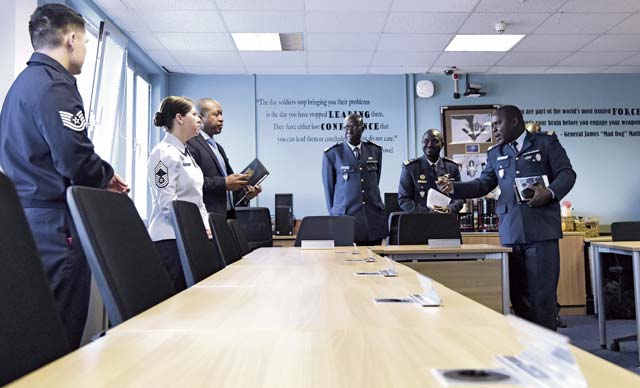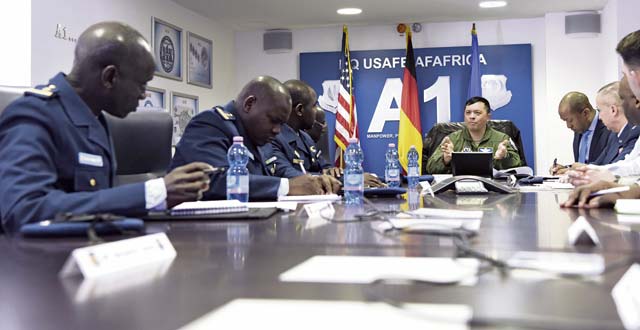
Four Senegalese Air Force senior representatives visited both the 86th Airlift Wing at Ramstein Air Base and the 52nd Fighter Wing at Spangdahlem Air Base, Feb. 11 to 16.
The group toured a wide variety of base facilities, offices, and professional education centers to get an idea of how the U.S. Air Force develops its Airmen and how it manages recruitment, retention and sustainment.
“At this stage, we share with them how we do things within our Air Force,” said Noel Fachi, U.S. Air Forces Europe –Air Forces Africa theatre security cooperation program manager. “Later, their leaders can pick and choose and see what is sustainable to their air forces.”
This is a new initiative grown in USAFE-AFAFRICA. After two years of planning, this program is designed to fast-track the growth of developing air forces of partner nations.

“This cooperation is very strong,” said Senegalese Air Force Major Mamadou Wathie, Chief of the SAF Logistics Division. “We play our part, our juniors will play their part, and we’ll continue to grow stronger and stronger in order to make our world safer.”
“I’m a product of the U.S. Air Force,” said Wathie. He studied English at Joint-Base San Antonio Lackland before training with U.S. and NATO maintainers at Sheppard Air Force Base, Texas.
“There’s no way that the U.S. can go it alone,” said U.S. Air Force Col. Ric Trimillos, USAFE-AFAFRICA International Affairs Director. “We’re always going to work alongside our partners,” he said.
“Often times our partners recognize when we have inefficiencies,” said Trimillos. “In our own culture we’ve done it over and over again, and it gets us to think ‘yeah, why do we do it that way?’ So it’s an information exchange.”
From here, the Senegalese returned to their commands with notes on what they observed: what works, what doesn’t, and what they’d like to see in their own force as they grow.
In the future, USAF officials will return to Senegal to assist in writing the doctrine and share lessons learned from the USAF’s own 70 years of existence.




